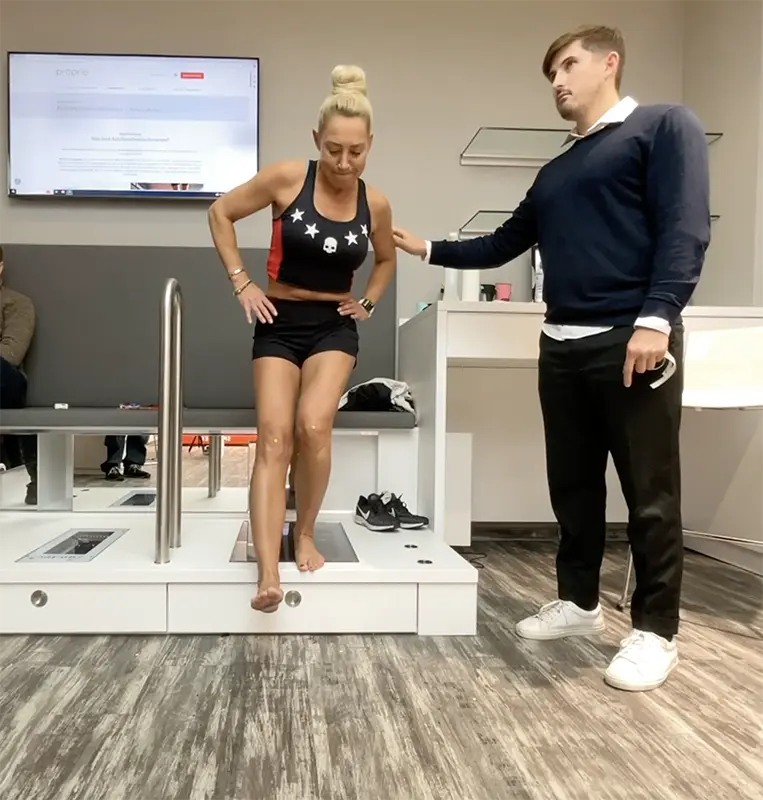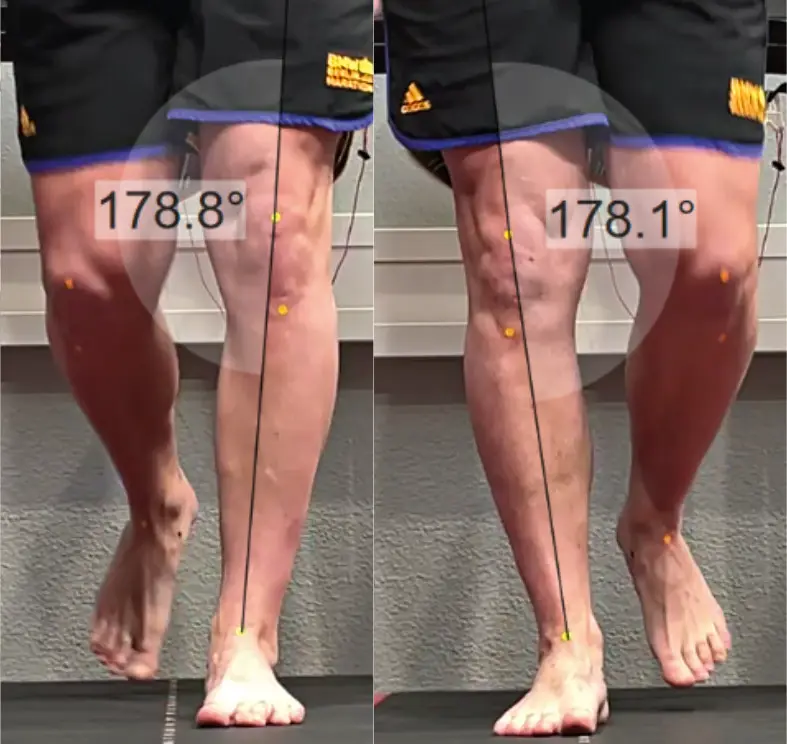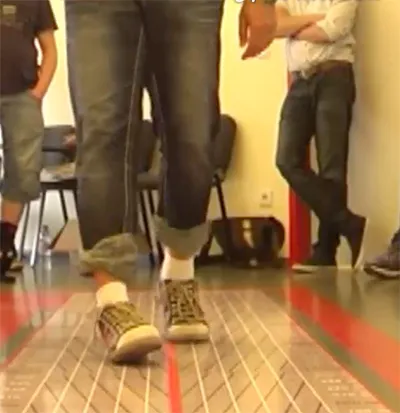The basics of sensorimotor skills: how sensory stimuli and motor reactions influence our daily lives
Welcome to the world of sensorimotor technology - where expert knowledge, sound advice and user proximity take centre stage. You can rely on us to develop customised solutions for your workshop and your patients. Discover the variety of our articles, which offer medical background reports and helpful tips.
Learn all about the central importance of sensorimotor function for posture and movement. Understand the essential relevance of the sensorimotor approach for foot orthosis care. The key role of sensorimotor function in foot care is particularly evident in numerous functional and neurological complaints. From basic explanations to specific application questions, we are your reliable source of medical expertise.
Learn all about the central importance of sensorimotor function for posture and movement. Understand the essential relevance of the sensorimotor approach for foot orthosis care. The key role of sensorimotor function in foot care is particularly evident in numerous functional and neurological complaints. From basic explanations to specific application questions, we are your reliable source of medical expertise.
The importance of sensorimotor skills for human posture and movement
Sensorimotor skills: key role for posture and movement coordination in medicine
Sensorimotor function plays a central role in the complex interplay of sensory stimuli and motor reactions in the human organism. This well-coordinated process is crucial for optimal posture and the smooth realisation of movements. We will go on to explain the basics of sensorimotor function and its important role in medicine.
Sensorimotor function: interaction of sensory and motor functions for precise adaptation to the environment
Sensorimotor function is made up of two main components: the sensory system, which is responsible for the perception of stimuli, and the motor system, which controls the corresponding motor reactions. The term 'sensorimotor function' describes the interaction of these sensory and motor functions. These processes are inextricably linked and form the essential basis for precise and adapted interaction between humans and their environment.
Medical applications and the key role of orthopaedic (shoe) technology
Sensorimotor function in medicine: key role in the treatment of musculoskeletal and neurological disorders
In the medical field, sensorimotor function plays a key role in the diagnosis and treatment of musculoskeletal diseases and neurological disorders. A well-functioning sensorimotor system not only ensures joint stability, but also enables efficient muscle coordination for complex movement sequences. The definition of intramuscular coordination describes the interaction between the nervous system and the muscle fibres within a muscle and is essential for understanding the recruitment of muscle fibres to increase maximum strength. Therapists and doctors specifically rely on these findings to improve the sensorimotor skills of their patients.
Sensorimotor disorders: Causes, diagnosis and targeted therapy through orthopaedic measures
Disorders in sensorimotor function can lead to various problems, including poor posture, balance disorders and motor impairments. This is why analysing and specifically promoting sensorimotor function is of central importance in medicine. Doctors and therapists diagnose disorders in the sensorimotor system and develop solutions to improve functionality. In this context, orthopaedic (shoe) technology plays a central role in the interdisciplinary network by offering customised aids such as insoles with a targeted sensorimotor effect.
Sensorimotor skills: the basis for individualised therapeutic approaches in musculoskeletal and neurological health
To summarise, sensorimotor function is essential for human posture and movement. A deep understanding of this complex interplay is crucial in order to take targeted measures, recognise pathological changes and develop individual therapy approaches. This in-depth knowledge forms the essential basis for comprehensive and effective medical care in the field of musculoskeletal and neurological health.
SCIENCE
Study proves effectiveness
It was demonstrated that proprio insoles have a significant influence on the activity of certain muscles. The measurements were taken on the easily recognisable peroneus longus muscle, which showed a clear increase in amplitude during the middle stance phase. The values obtained are statistically significant and the study was conducted to a high quality - double-blind and randomised.
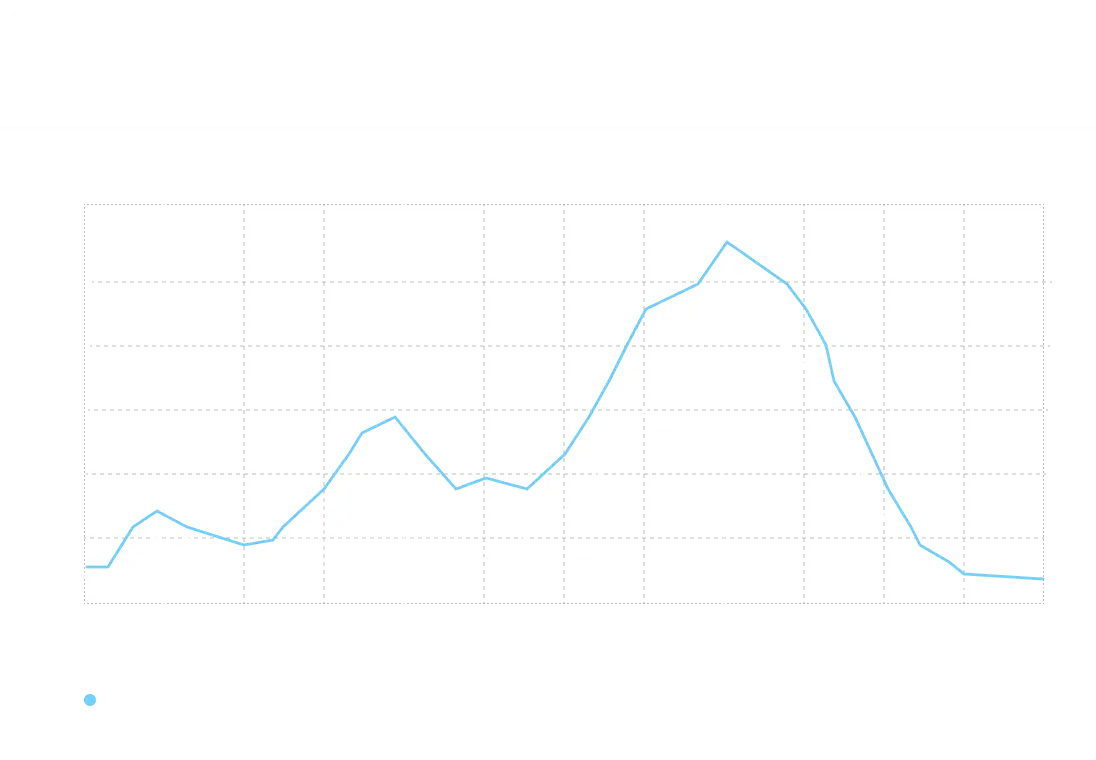
EFFECTIVE PRINCIPLE
How sensorimotor foot orthoses work
Proprioception in the foot: influence on muscle tension, joint position and biomechanical processes
Through targeted stimulation of the tendons of the long and short muscles in the foot, proprioceptors in the muscle belly and in the transition area from muscle to tendon influence the receptor signals. In response, the central nervous system regulates muscle tension, which in turn significantly influences the joint position and thus the statics. This leads to biomechanical torques that influence various dynamic processes such as foot and leg rotations. The targeted compensation of muscular imbalances makes a decisive contribution to the effective prevention of associated complaints.
Customised proprio insoles: Precise CNC production to correct misalignments and support the foot structure
This highly complex process generates a lasting training effect for the muscles, which potentially leads to the long-term correction of misalignments and functional deficits. The surface structure of proprio insoles is highly customised by experienced orthopaedic (shoe) technicians, based on extensive knowledge of the anatomy, physiology and specific requirements of individual patients. The insoles are manufactured with extreme precision using state-of-the-art CNC technology, which has the invaluable advantage that they can be reproduced down to the last detail. The shape of the insoles plays a crucial role in their effectiveness, as it ensures the correct alignment and support of the foot structure. They can also be produced in different material thicknesses depending on the individual shoe situation, even for particularly elegant shoe models.
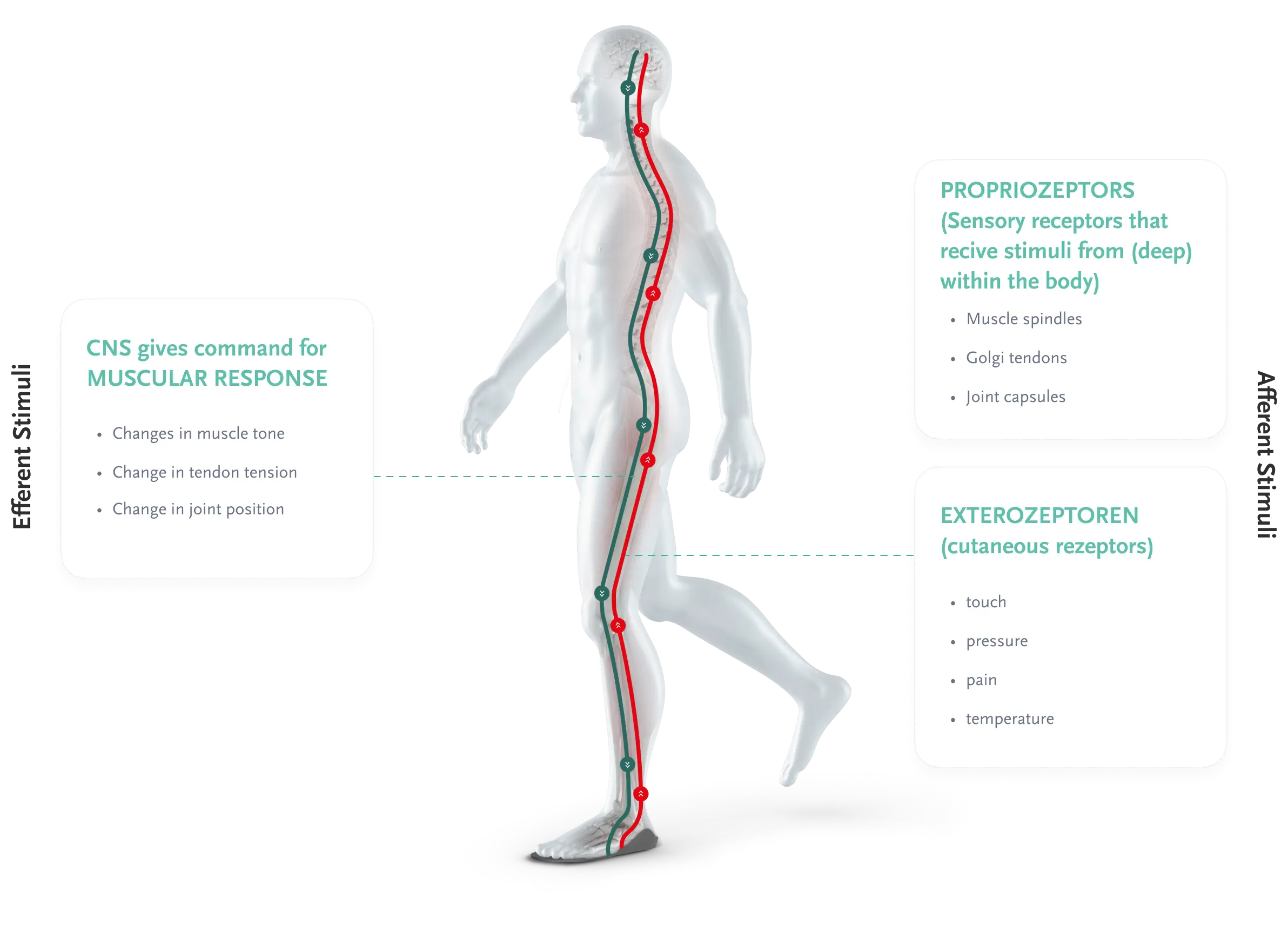
Active operating principle
Customised sensorimotor insoles: tailor-made solutions for targeted muscle activation and relaxation
In the world of sensorimotor foot orthoses, the high art of creating customised strategies is evident. The challenge is to design the elements of the insole in variable thicknesses and heights depending on the indication in order to enable customised activation or relaxation of the muscles.
For each patient, this means a unique customisation that is tailored to the indication, anatomy and movement pattern. Defining a clear treatment goal is the starting point, followed by detailed planning of how this goal can be achieved through the precisely designed surface anatomy of the foot orthosis.
For each patient, this means a unique customisation that is tailored to the indication, anatomy and movement pattern. Defining a clear treatment goal is the starting point, followed by detailed planning of how this goal can be achieved through the precisely designed surface anatomy of the foot orthosis.
proprio foot orthoses: Versatile, indication-related models for precise orthopaedic treatment
The proprio brand plays a decisive role in this context. With hundreds of indication-related models, proprio not only guarantees the highest quality of care, but also supports orthopaedic professionals in quickly and systematically finding an effective solution for their patients. The variety of models provides professionals with the necessary tools to fulfil the individual needs of each patient precisely and efficiently. Immerse yourself in the fascinating world of proprio, where innovation and precision form the basis for successful treatment.
Toe bridge
Relaxes the triceps surae muscle and promotes tactile perception
Media spot
Activates the tibialis posterior muscle

Retrocapital support
Relaxes the triceps surae muscle
Lateral spot
Activates the peroneus longus and brevis muscles
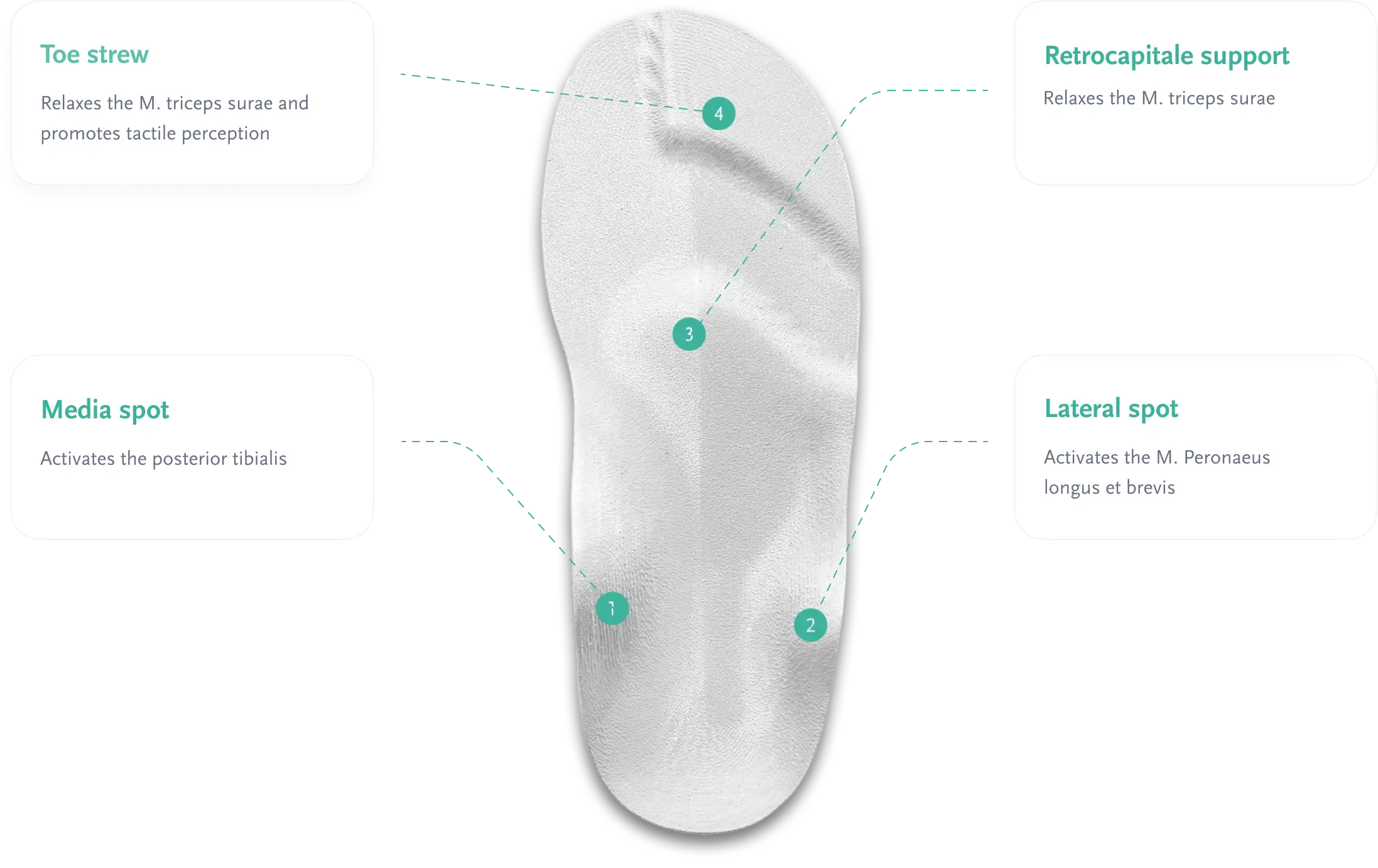
Media spot
Lateral spot
Retrocapital support
Medial spot to activate the posterior tibialis muscle
A pressure point on the inside of the insole, in the area of the tendons on the shin, signals reduced muscle tension to the receptor system. This important signal is recognised by the central nervous system, which in turn leads to increased muscular activation. This reaction results in an increased tone of the muscles that straighten the longitudinal arch and leads to supination of the foot. This specific element serves to actively correct excessive eversion and pronation. The medial spot is emphasised in particular when a shift of the plumb line in the foot-leg axis and in the gait pattern towards the medial side is detected.
Example indications:
Knuckle foot, flat foot, valgus gonarthrosis
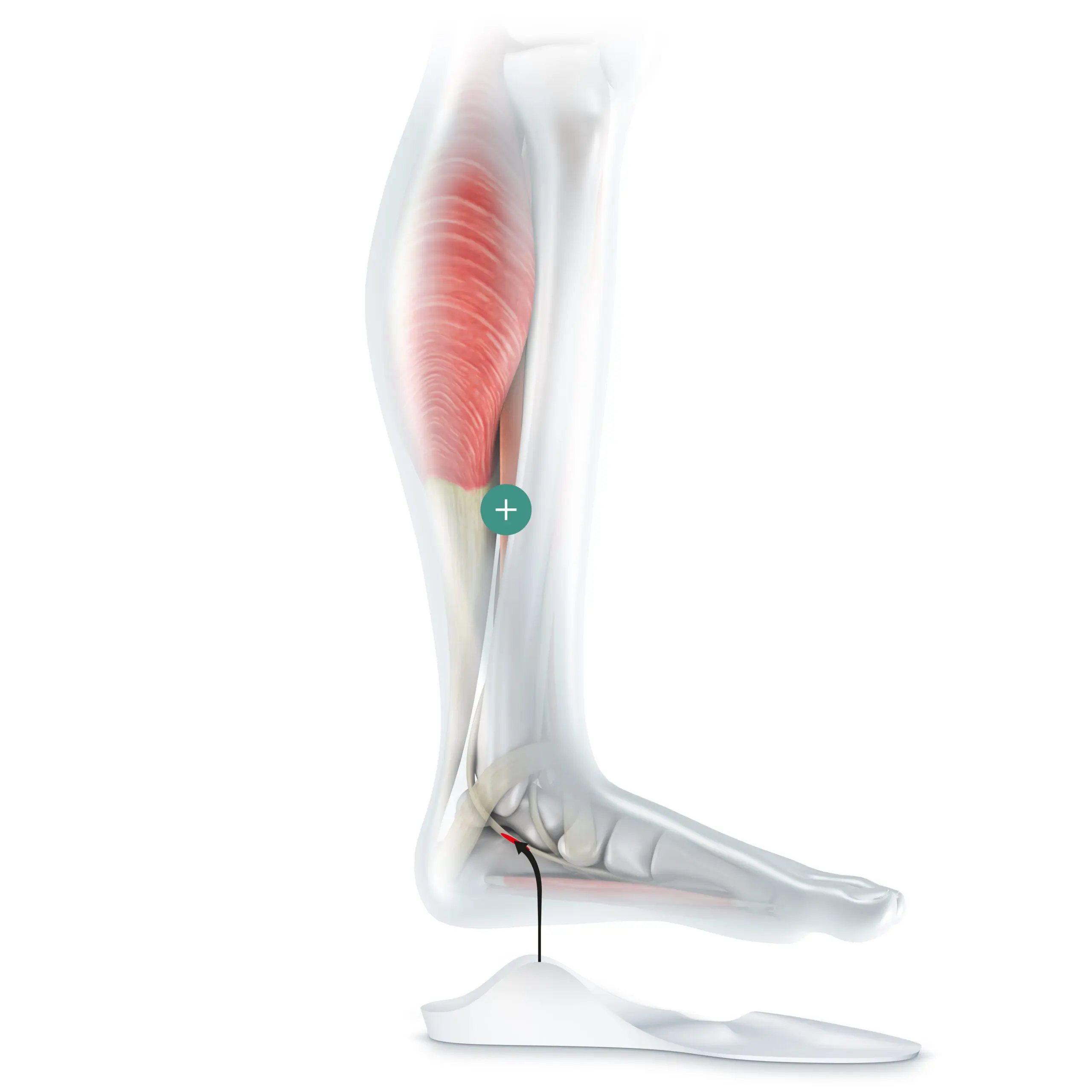
Lateral spot for activation of the peroneus longus and brevis muscles
The pressure point placed in the insole causes a targeted shortening of the muscle-tendon distance along the outer edge of the foot. This leads to the perception of a reduced degree of tension by the receptors in the muscle belly and in the transition area between muscle and tendon. In response to this signal, the central nervous system activates the peroneal muscles. This physiological reaction has been proven by scientific studies*. The resulting activation of the peroneal muscles induces a pronation movement in the foot. This is why this specific element is emphasised in foot orthoses, especially when an increased load on the outer edge of the foot and a supinated gait pattern are observed.
Example indications:
Hollow foot, clubfoot, sickle foot, underpronation, varus gonarthrosis
*Ludwig et all, 2013 Influence of a sensorimotor insole on the activity of the peroneus longus muscle in the stance phase
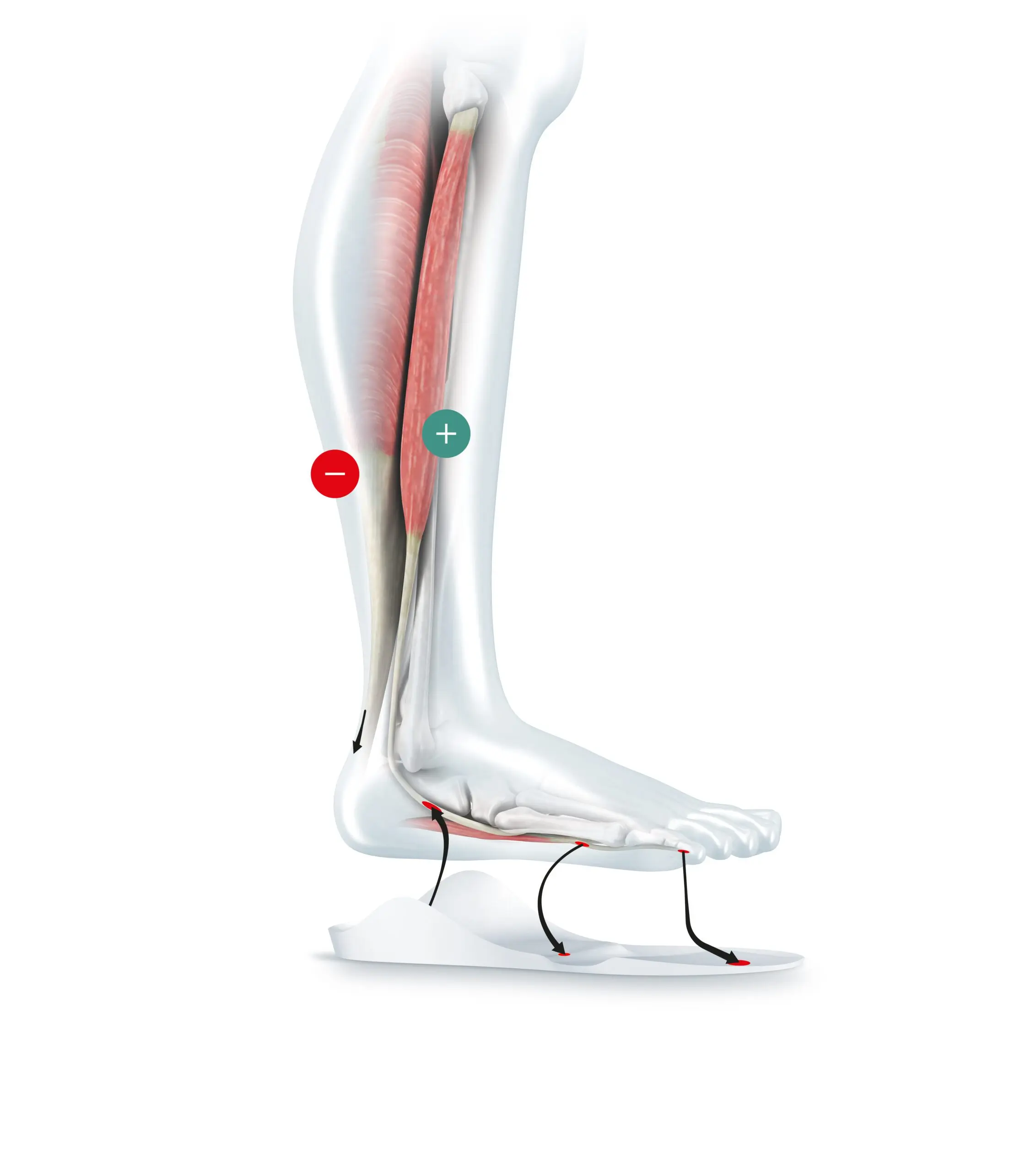
Retrocapital support and toe bar to relax the triceps surae muscle and Achilles tendon
The targeted application of the two forefoot elements stretches the plantar fascia in a targeted manner. This leads to increased longitudinal stretching in the muscle spindles of the calf muscles and the tendon receptors of the Achilles tendon. The central nervous system reacts to this preceding pre-tension with a reflexive relaxation of the calf muscles. This principle is similar to unconscious stretching training. This is why these elements are used in particular when there is increased tone in the triceps surae muscle or discomfort in the Achilles tendon.
Example indications:
Pointed foot, muscular plus symptoms such as spasticity, Parkinson's disease, achillodynia
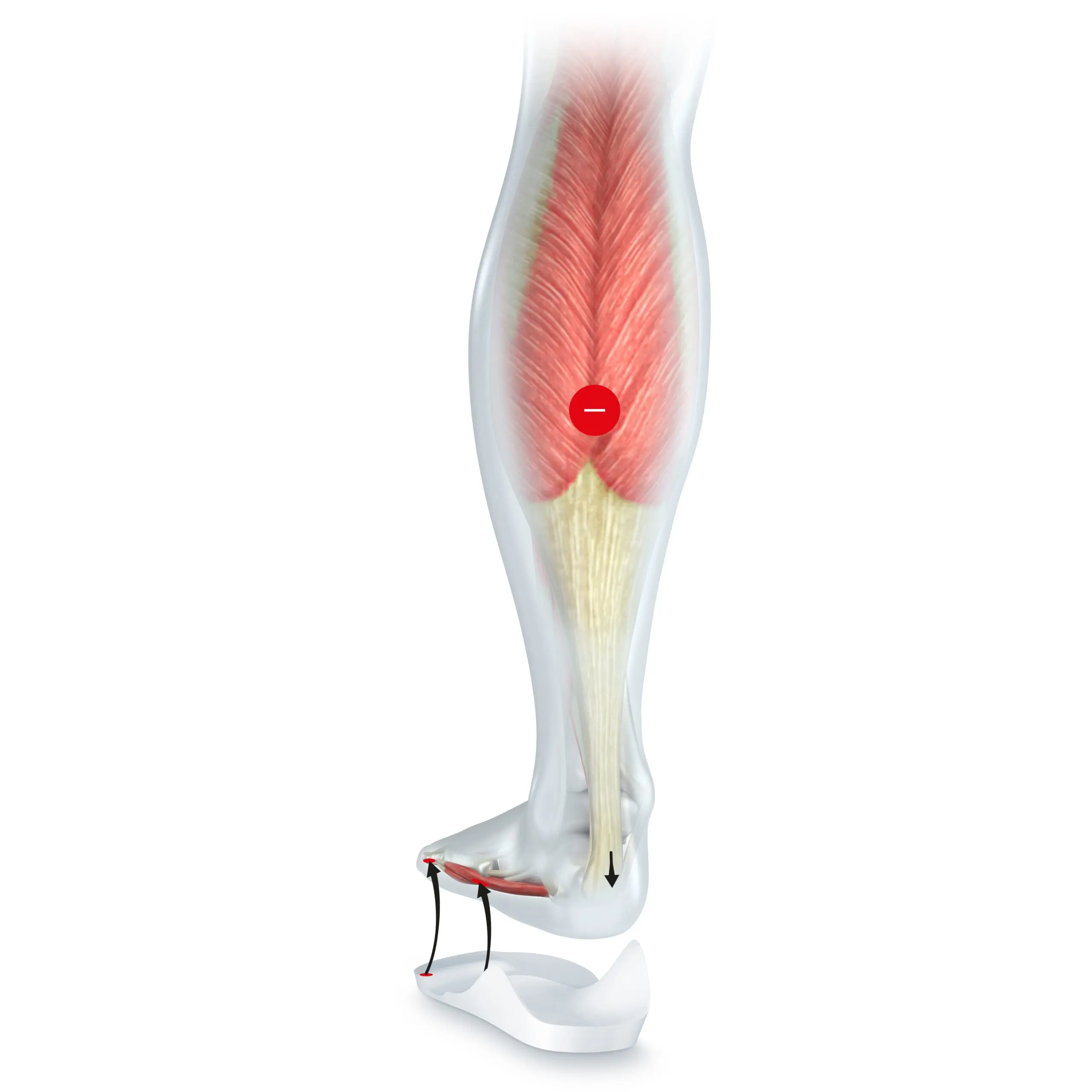
Case studies
Take a look at our case studies to see how sensorimotor foot orthoses are used in everyday practice.
Contact person
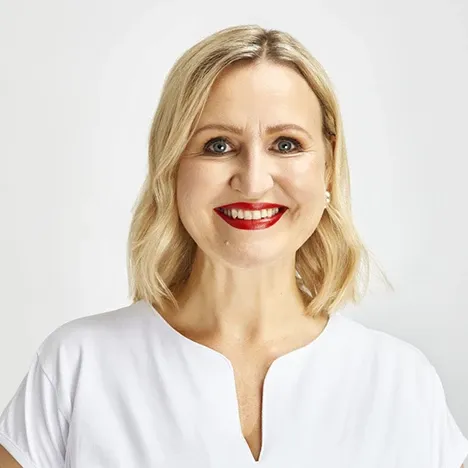
"At Springer, I am your contact for technical questions about sensorimotor technology. I am happy to provide you with case-related support and am also available to answer tricky questions. I regularly report on exciting applications and scientific background in our social media channels. Want to know what's going on? Subscribe to our newsletter and follow us on LinkedIn."
Jeannette Arend
Sensorimotor Speaker - Head of Medical Affairs
Order & Training
Our offer
Ready for a deep insight and the perfect start into the world of sensorimotor technology? We are your ideal partner with a team of experts in the background. Our first-class products work reliably and our training courses are inspiring. You are guaranteed all-round support when integrating into the world of sensorimotor care.
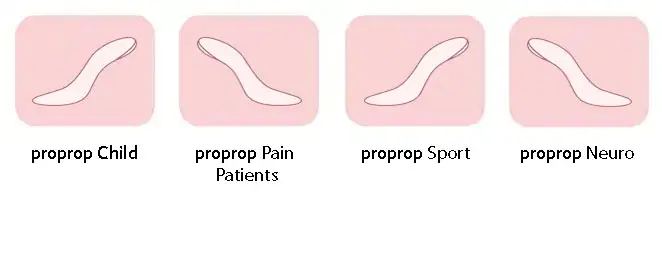
Configure proprio SOLE in the webshop
In just a few steps, they create a customised sensorimotor insole - reproducible at any time and with an analysis protocol.
To the shop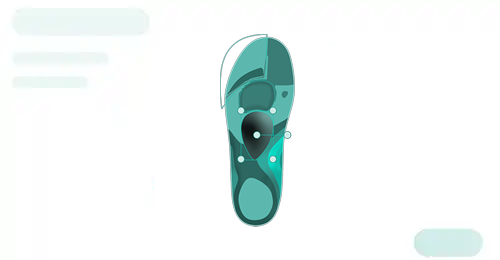
Design proprio SOLE with software
Design your sensorimotor insole in just a few steps and fit the modules to the foot with millimetre precision - 100% made to measure.
More about EasycadSeminar modules
Certification
Basis
Sensorimotor skills level 1
€ 279 /per person
StartRepetition of important muscles and their function
Recognising the differences between classic and sensorimotor foot orthoses
Work out the structure of the inserts in detail in terms of shape, effect and weighting of the functional elements
Understanding the functional principle of sensorimotor foot orthoses
A taster of the topic "Neuromuscular control and regulation"
Get to know analysis parameters
Explain the main indications
Define reference values for static and dynamic analysis
Get to know the prescription and billing options for sensorimotor foot orthoses
Child
Sensorimotor skills level 2A
€ 795 /per person
StartAge-dependent assessment of foot, gait and posture findings
Group work with test subject children to create an analysis protocol
Carry out functional test procedures and posture analyses with test children
Palpation of children's feet
Posture and scoliosis - recognising functional correlations
Proportioning the sensorimotor elements using different foot images
Developing and creating a sensorimotor insole fitting for the respective test child / case study
Pain & Sport
Sensorimotor skills level 2B
€ 795 /per person
StartEvaluation and relativisation of static findings
Partner work in analysis and palpation according to a standardised analysis protocol
Evaluation of dynamic parameters from gait and functional analyses
Partner work Muscular test procedures to deepen the findings from the gait analysis
Load-dependent evaluation of the dynamic findings
Learn to filter out the most important parameters from an analysis, organise findings and create protocols
Partner work Palpation and proportioning of the sensorimotor elements
Production of a sensorimotor insert based on your own or your partner's protocol
Neuro
Sensorimotor skills level 3
€ 795 /per person
StartUnderstanding neurological clinical pictures in the context of leading orthopaedic symptoms
Neuro-rehabilitation measures and the adaptation of sensorimotor insoles to the course of treatment
Workshop with case studies and patients and subsequent fitting with sensorimotor insoles
Illustration of the treatment process from stabilising aids to the greatest possible momentum through sensorimotor insoles in suitable footwear with decision-making aids
Design and manufacture of sensorimotor insoles for patients with e.g. hemiparesis, ICP, apoplexy, multiple sclerosis, Parkinson's disease, etc.
Workshop on efficient methods for creating a plaster cast to produce a dynamic foot orthosis
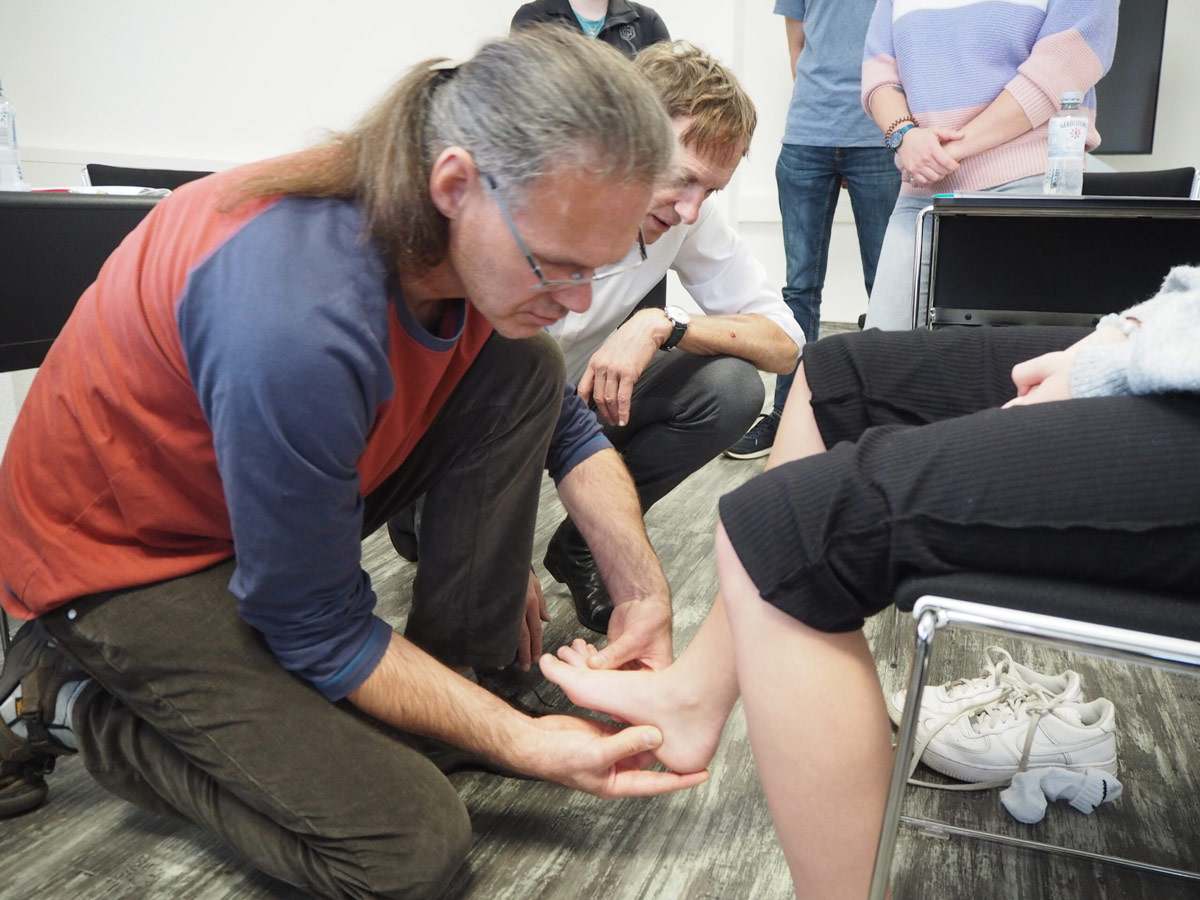
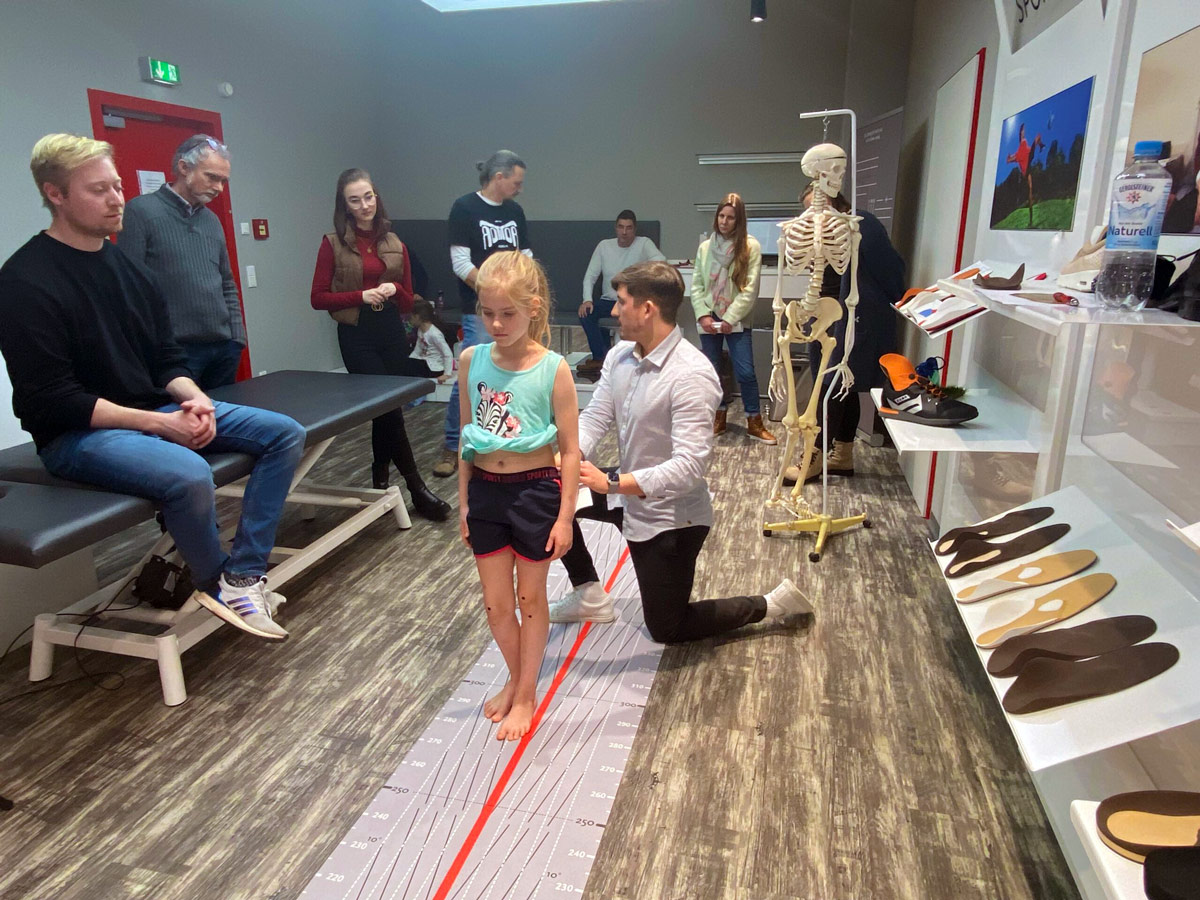
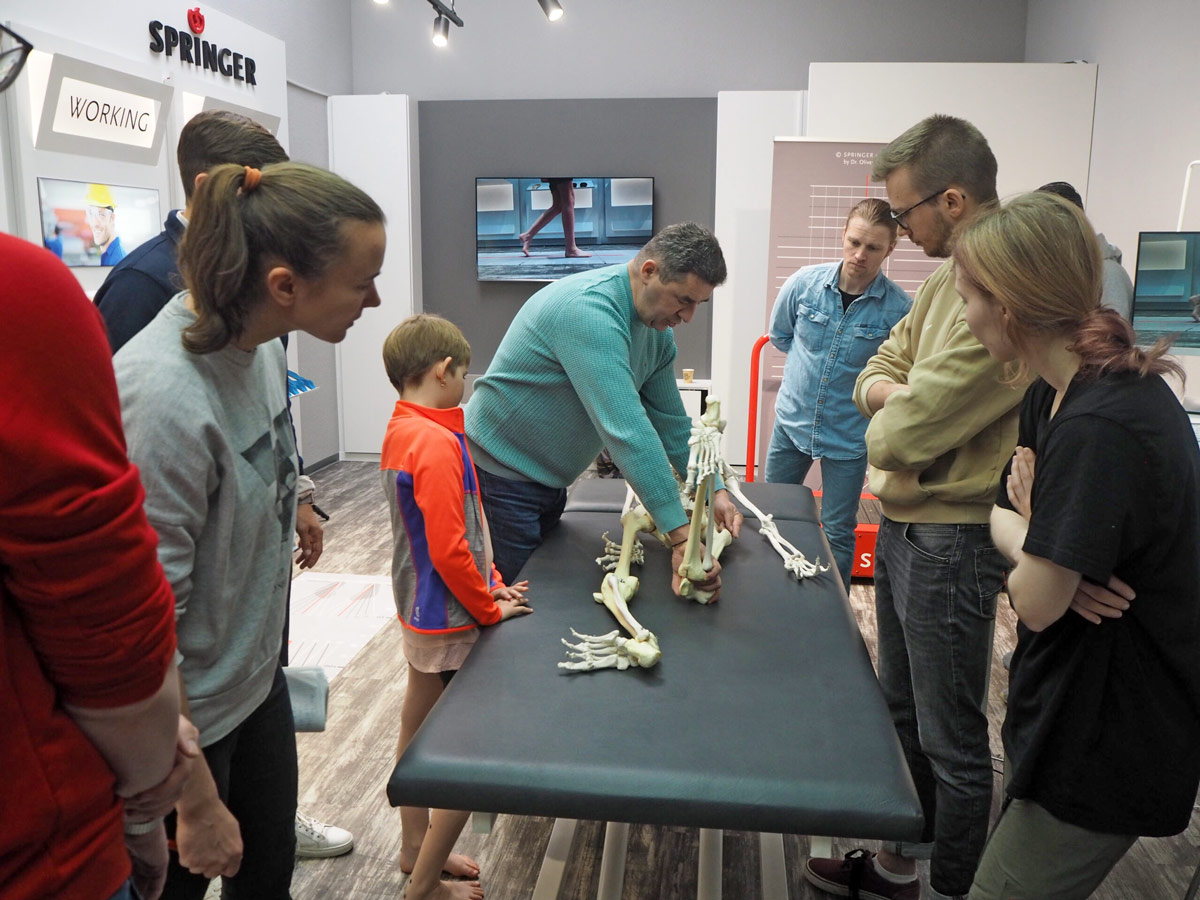
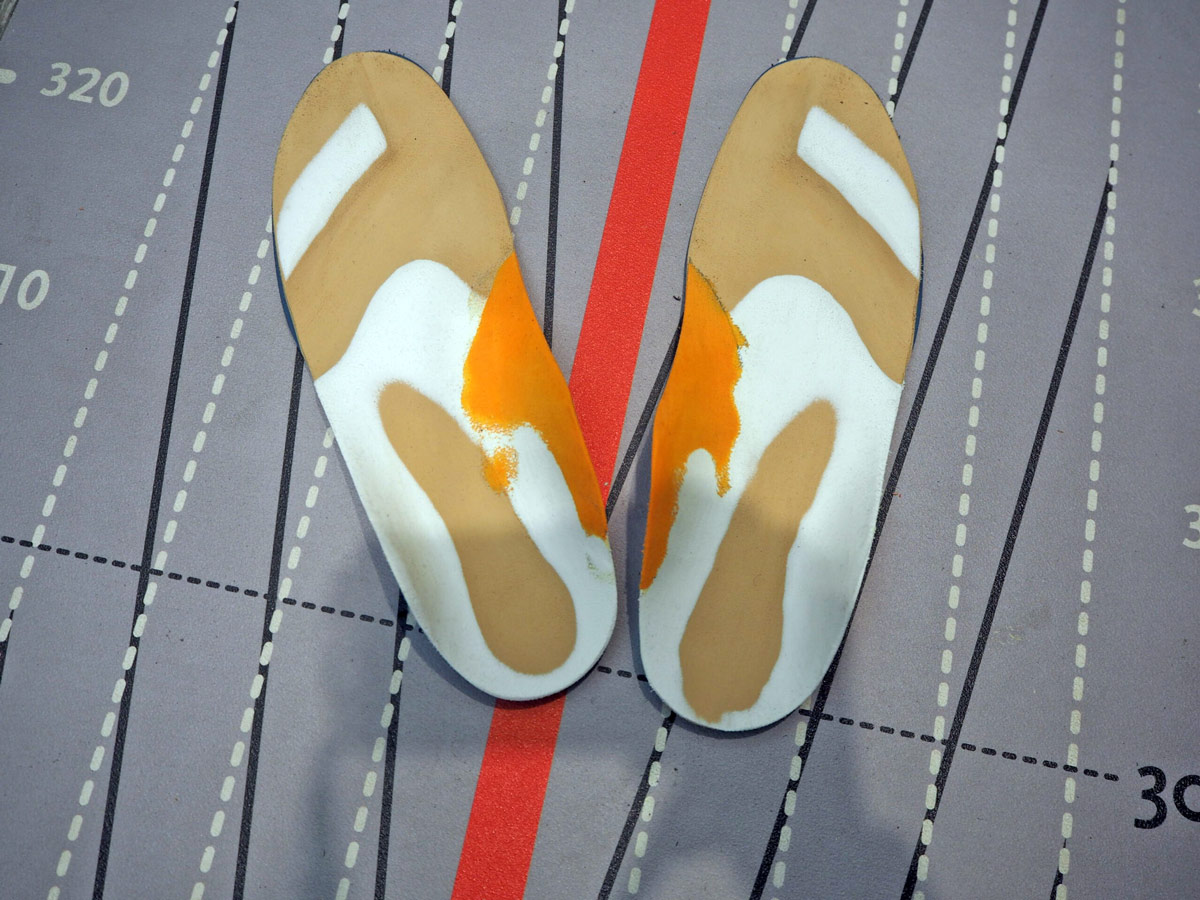
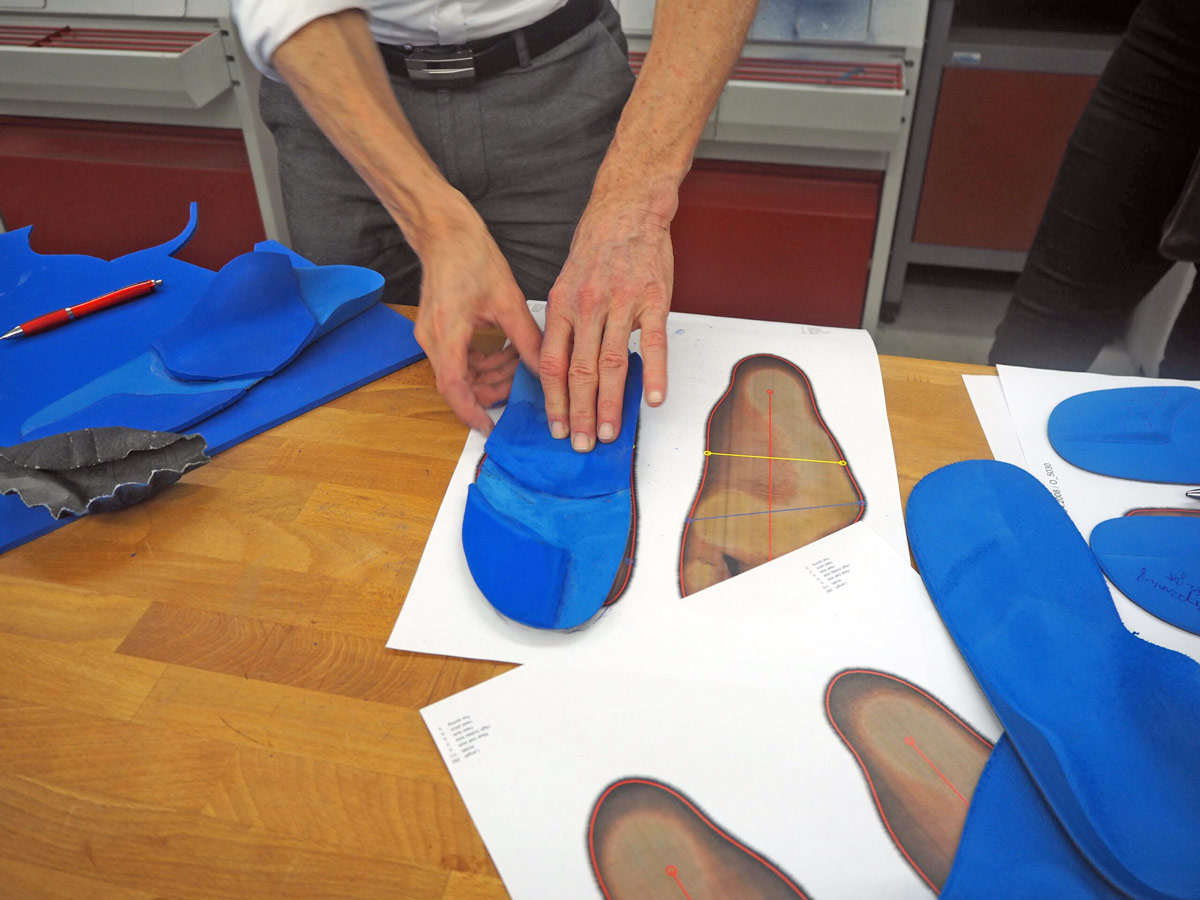
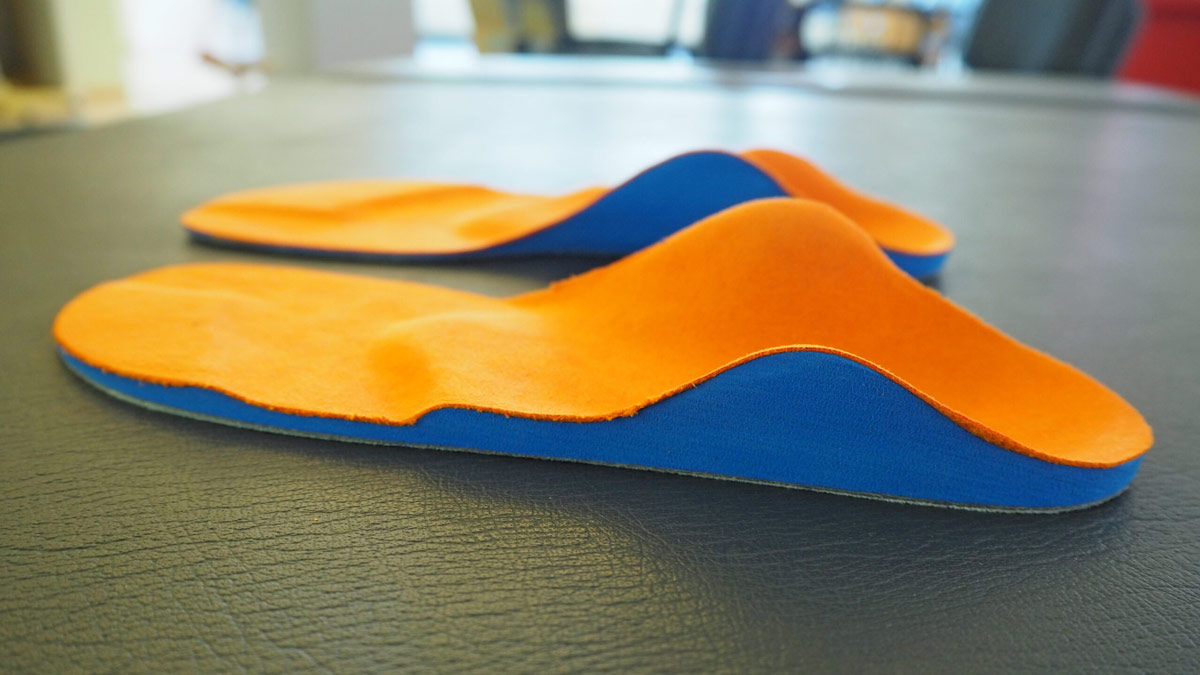
Prescription / Billing
Prescription / billing of sensorimotor insoles
The doctor diagnoses a functional or neurological gait disorder, often in conjunction with a foot malposition. The therapy services offered include both the treatment of foot malpositions and the analysis processes to improve sensorimotor function. A prerequisite for the prescription is a clear indication. According to the Fifth Social Security Code (SGB V), there is a legal entitlement to the care required in individual cases, even if the products are not listed in PG08.
If the health insurance company refuses to cover the costs, the patient has the right to lodge an objection in writing. You can find the relevant objection form on www.proprio.info.
If the health insurance company refuses to cover the costs, the patient has the right to lodge an objection in writing. You can find the relevant objection form on www.proprio.info.
The aim of the treatment is to minimise or eliminate the causes of functional complaints and gait disorders by modifying neuromuscular signals. As a rule, the aid number 08.03.07.0 "Customised foot orthoses for severe, painful and contracted foot deformities" applies.
Some health insurance funds have concluded individual contracts with the service providers and list "Proprioceptive insoles, customised" under their own aid numbers, for example 08.00.03.0701 AOK plus.
Some health insurance funds have concluded individual contracts with the service providers and list "Proprioceptive insoles, customised" under their own aid numbers, for example 08.00.03.0701 AOK plus.
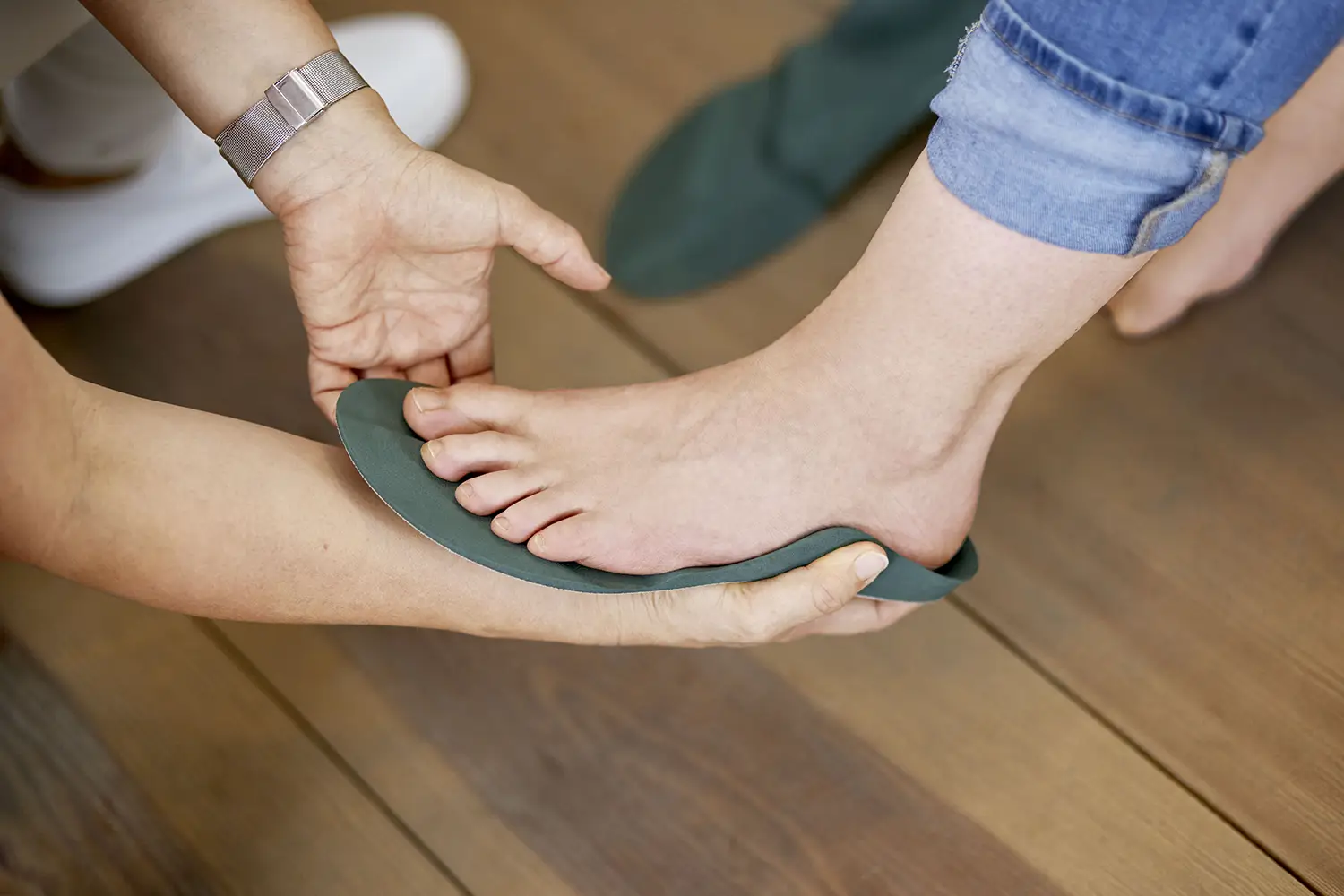
Sensorimotor skills: an overview
Sensorimotor function involves the integration of sensory stimuli and motor reactions, which is essential for the control and coordination of movements. It is based on proprioception, the body's own system for perceiving the position and movement of limbs and joints. Sensory stimuli received by receptors in muscles, tendons and joints are converted into motor responses that regulate movement and posture. Muscle activity plays a crucial role here, as it improves sensory and motor skills and protects the body from injury.
Proprioception plays a crucial role in sensorimotor function. It enables constant monitoring and adjustment of posture and movements. This is done by proprioceptors in muscles and joints, which continuously send information about the position and movement of the body to the central nervous system.
Sensorimotor therapies: Effective solutions for musculoskeletal and neurological disorders
Musculoskeletal conditions such as osteoarthritis and tendinopathies benefit from sensorimotor therapies aimed at improving proprioception and muscular stability. Intramuscular coordination describes the interaction of muscle fibres within a single muscle, while intermuscular coordination addresses the interaction between different muscles. Both concepts are crucial for optimising movement sequences and maximum strength. Exercises aimed at increasing sensory feedback can alleviate pain and restore functionality.
Sensorimotor therapies play a central role in neurological disorders such as strokes and multiple sclerosis. They help to regain lost motor functions and promote neuroplasticity. Special exercises and technical aids support the restoration of sensorimotor integration.
Sensorimotor approaches are essential for the treatment of balance disorders, which often occur in older patients or after neurological events. Targeted exercises are used to train the balance system, which prevents falls and increases mobility.
Customised foot orthoses: Modern orthopaedic technology for optimum foot health
Orthopaedic technology has developed considerably and offers customised solutions for various foot problems. The customisation of insoles plays a key role here.
Precise insole care takes into account the specific needs of the patient. Orthopaedic shoe technicians use advanced technologies to produce insoles that optimise foot function and alleviate discomfort.
The integration of modern sensor technologies into orthopaedic footwear technology makes it possible to precisely analyse dynamic and static loads. This leads to better fitting and more effective treatment results.
Optimised posture and movement: How sensorimotor approaches improve joint stability and muscle coordination
Good posture and movement are essential for general health. Sensorimotor approaches help to correct posture and improve movement sequences.
Sensorimotor exercises strengthen joint stability, which is particularly important for patients with instabilities or after injuries. These exercises promote neuromuscular control and reduce the risk of further injuries.
Targeted training improves the coordination of the muscles. This is important for the efficient execution of movements and to avoid overloading and injuries.
Prevention and improvement through sensorimotor skills: counteracting postural weaknesses and increasing biomechanical efficiency
Sensorimotor approaches are effective in the prevention and treatment of poor posture. It is emphasised that preventive approaches to avoid postural damage and the treatment of poor posture should be supported by sporting activity and targeted muscle training. Regular training and the right foot orthoses can correct poor posture and improve posture in the long term.
Sensorimotor insoles support foot function and improve proprioception. They help to stabilise the entire musculoskeletal system and promote healthy biomechanics.
By improving proprioception and muscular control, biomechanical efficiency is increased. This leads to better power transmission, less fatigue and better overall performance.
The sensorimotor system directly influences the central nervous system by processing sensory information and controlling motor reactions. A well-functioning sensorimotor system is therefore crucial for general health and performance.
